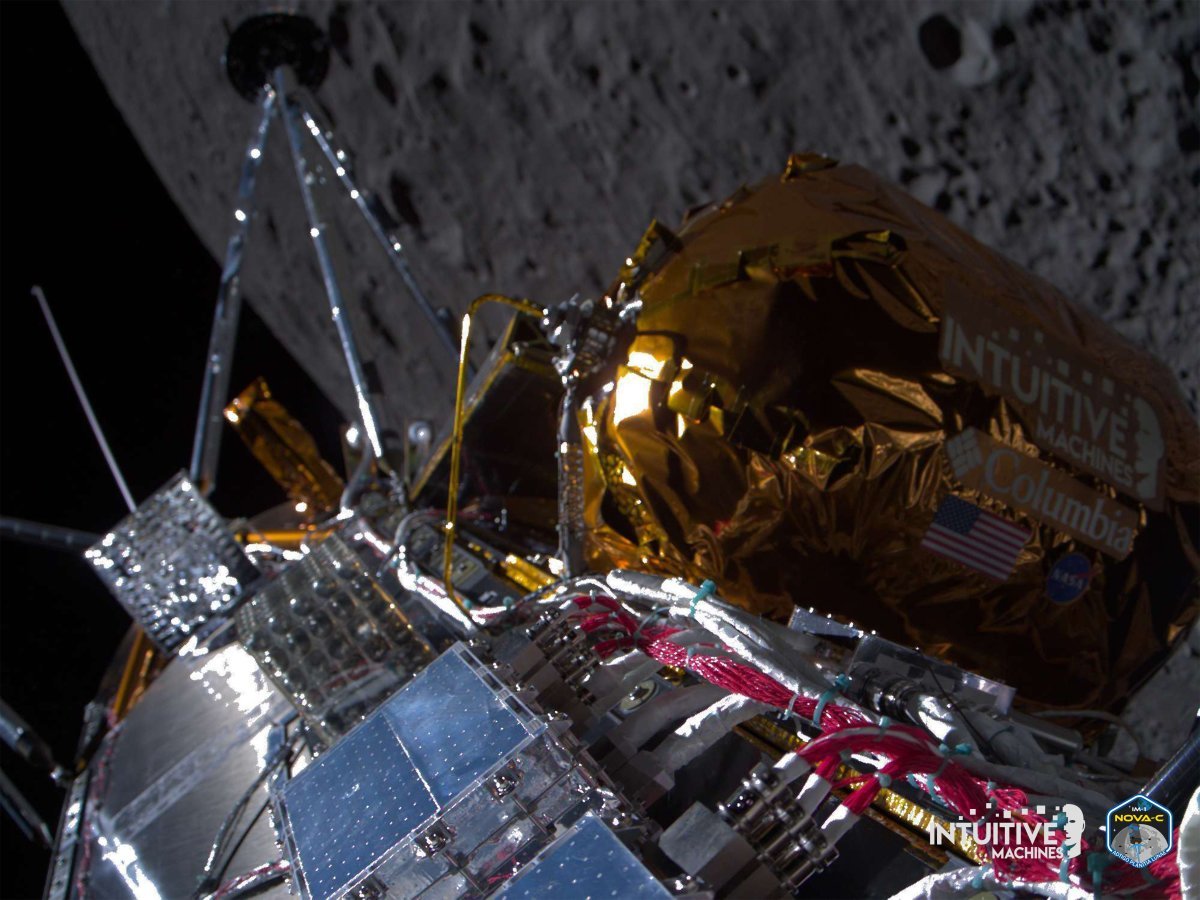Intuitive Machines‘ spacecraft accomplished a formidable feat yesterday when it landed on the lunar surface . . . sideways. CEO Steve Altemus expressed his disbelief during a press conference on Friday, stating that despite the less-than-perfect landing, it is nothing short of a miracle that the spacecraft landed intact at all.
Using a small model of the lander, Altemus demonstrated how engineers believe the spacecraft, called Odysseus, made its descent based on the most recent telemetry data.
“The vehicle is stable near or at our intended landing site,” Altemus said. “We’re downloading data from the buffers in the spacecraft and commanding the spacecraft.”
Intuitive Machines confirmed yesterday that the lander successfully touched down on the surface at 5:24 p.m. Central Time, making the company the first to put a privately built spacecraft on the moon; however, many details about the vehicle’s health remained unknown. This was due in part to the fact that the onboard camera, an instrument called EagleCam, was powered down during landing. Without visual evidence, engineers had to rely on other data to determine the lander’s orientation after it landed.
Even now, the company continues to piece together the series of events that led up to the historic landing. Initially, the company believed Odysseus was upright, but Altemus revealed that this determination was based on “stale” telemetry data. Current information indicates that the spacecraft was indeed vertical upon touchdown, but due to its excessive horizontal velocity, it is possible that one of its legs caught on something or broke, causing it to tilt over.
The good news is that most of the onboard payloads were not affected by the downward-facing panel, which was the only one not required to operate on the lunar surface. The company was able to confirm that many of the major subsystems, such as the solar arrays providing power to the spacecraft and the onboard payloads, are functioning properly.
The success of this mission was largely thanks to the quick thinking of Intuitive Machines’ mission controllers — but also, a bit of good luck.
The navigational issues began after Odysseus conducted a planned maneuver called lunar orbital insertion on Wednesday night, positioning it in an elliptical orbit around the moon. This turned out to be extremely “fortuitous,” according to Altemus, as it prompted mission controllers to attempt to use a navigational subsystem known as “laser rangefinders” much earlier than planned. Originally, the lasers were scheduled to be activated for the first time during the final descent phase.
After reviewing the data, the company discovered on the morning of landing that the lasers were not functioning properly because a physical safety switch had not been turned off on the component while it was still on the ground.
These lasers are critical for determining variables like altitude and horizontal velocity during landing. Had they not been working, Odysseus could have met the same fate as many other landers and crashed onto the surface. In response, the company considered several options, but ultimately decided to utilize a NASA Doppler lidar payload originally intended for technology demonstration purposes. They directed Odysseus to orbit the moon for an additional two-hour period, giving them more time to download software patches and reset the lander’s guidance, navigation, and control system.
It was a thrilling last-minute save. Prasun Desai, deputy associate administrator of NASA’s space technology mission directorate, spoke during the press conference, stating that the agency had been hoping to bring the Doppler lidar technology to a technology readiness level (TRL) of 6. However, due to its successful execution aboard Odysseus, it has now been elevated to TRL 9 — the highest level of readiness.
“All that hard work came to fruition yesterday when a technical issue arose and the teams decided that it was best to switch and rely on this technology demonstration,” Desai remarked. “Based on the limited data we have received, everything performed flawlessly.”








